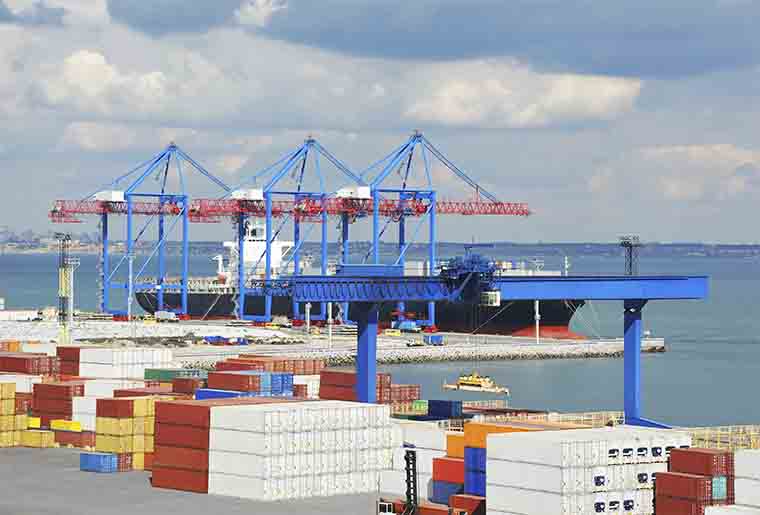Tariff quotas are trade tools that regulate the flow of goods across borders, seeking a delicate balance between protecting local production and meeting domestic demand. But what is their real impact on the vast global market? At Partida Logistics, we delve deeper into the topic, offering you all the information you need about tariff quotas and an analysis of their impact.
What are tariff quotas? A relief for importers
A tariff-rate quota (TRQ), also called a tariff quota, is a trade mechanism used by governments and international organizations that allows a certain quantity of goods to be imported at a reduced or zero tariff rate for a specific period of time. Once the established limit is exceeded, the standard tariff rate is imposed or other import restrictions are applied.
Tariff rate quotas are often used to control foreign trade, regulate the supply of certain products in the domestic market, and promote competitiveness and price stability in a specific sector of the economy.
Which importers can benefit from a tariff rate quota?
Typically, tariff rate quotas benefit importers because they lower tariffs on products that typically carry higher taxes. However, not all importers can benefit from tariff rate quotas. In some cases, they are licensed, meaning that only certain companies can benefit from preferential conditions.
Objectives of tariff rate quotas: The search for balance
Tariff rate quotas can be introduced for different purposes. The most common are:
- To facilitate access to imported goods that are needed in the market but not produced domestically.
- To protect domestic producers by allowing them to compete with imported products with higher tariffs.
- Stabilize market prices by controlling the supply of goods.
- Support trade agreements and international treaties.
How does a tariff-rate quota work?
A government or an international organization (e.g., the European Union, the World Trade Organization, WTO) establishes a quantitative or value limit for a specific good. For example, the government in question could set a limit on the quantity of oranges that can be imported from other countries.
During the quota period, goods can be imported at a lower tariff rate. Once the quota is exhausted, the full tariff rate is applied or imports can be restricted.
Continuing with the orange example, this government would incentivize the purchase of this fruit up to a certain limit by controlling its marketing. This establishes a balance that satisfies the country’s demand while protecting domestic orange production.
Which goods are subject to tariff rate quotas?
Tariff rate quotas can be applied to any good. However, due to the characteristics of certain markets, they are most frequently applied to the following types of products:
- Perishable products: Agricultural and food products, such as sugar, milk, grain, or meat.
- Energy resources, such as crude oil or gas.
- Selected industrial products, including steel products and textiles.
What is the difference between a tariff rate quota and a quantitative quota?
There is one type of quota that could be confused with a tariff rate quota. However, they are different measures. Below is a brief description of each concept, emphasizing their differences:
- Tariff rate quota: Allows a certain quantity of goods to be imported at a reduced customs duty rate; once the limit is exceeded, standard customs duties apply.
- Quantitative quota: Determines the maximum quantity of goods that may be imported, regardless of the customs duty rates.
Analysis: How do tariff rate quotas impact the global market?
TRQs introduce a layer of complexity into global trade. In the short term, they benefit importers who gain access to quotas with reduced tariffs, allowing them to offer more competitive prices or increase their profit margins. For consumers, this can translate into greater availability of certain products at more affordable prices, at least until the quota is exhausted.
However, their long-term effects are more nuanced. By limiting the quantity of imports to a preferential tariff rate, tariff rate quota can restrict global supply and, once the quota is exceeded, cause a sudden increase in prices due to the application of higher standard tariffs. This introduces volatility and uncertainty into markets, making long-term planning difficult for companies.
From the perspective of exporting countries, TRQs can limit their access to certain markets, especially if the quotas are restrictive. This can negatively affect their production and trade balance. Furthermore, the allocation of quotas can generate trade tensions between countries, especially if perceived as unfair or discriminatory.
Ultimately, Tariff rate quotas seek a balance between protecting sensitive domestic industries and promoting international trade. While they can be useful for achieving specific short-term objectives, their widespread application can fragment the global market, distort competition, and potentially make products more expensive for consumers in the long term. Their actual impact depends largely on the magnitude of the quotas, the products to which they are applied, and the global economic context in which they operate.




